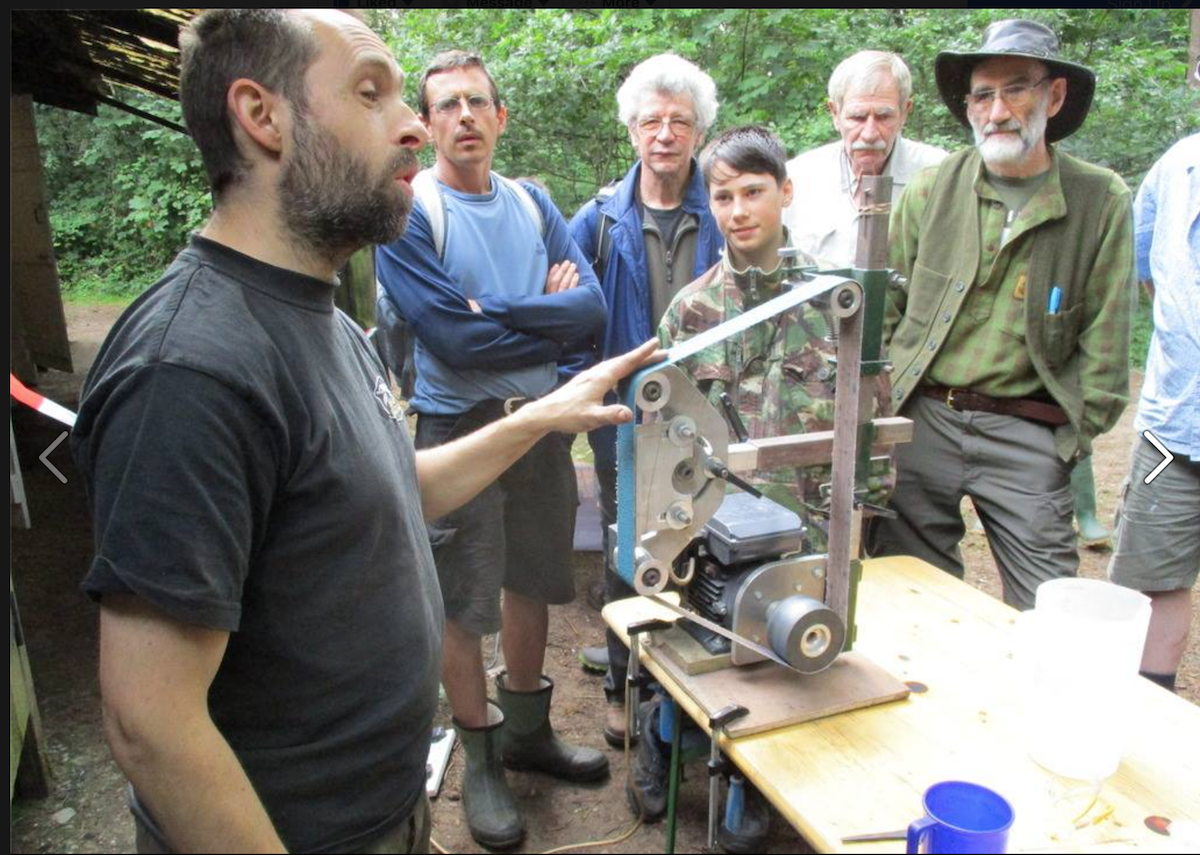Knife Making – What you need to know about Abrasive Belts

WHAT SIZE?
If you are thinking of making or buying a grinder be sure to pick a standard size. If you do not you will face high individual order costs as you will have to take a minimum of ten belts per grit size.
Popular Knifemaking sizes (metric) are- 25×762, 50×686, 50×915, 50×1065, 50×1220, 50×1830, 50×2000, 100×915.
If space is not a problem then the longer the belt the better.This gives a cooler cut & a lower cost per meter of abrasive.
WHAT TYPE?
There are several options all of which will work but there are sound reasons for choosing the correct one.
Aluminium Oxide offers the widest grit range (24-600) & the widest range of backing cloths – “X”(heavy), “J”(Flexible), “JF”(Very flexible).
It is also the only product in the finer grit range that is suitable for blades & handles.The flexible backings are obviously good for contour work. The lowest initial cost.
Zirconia – Grit range 36-180.
Good at the coarse end offering a faster cut, longer life & higher stock removal than Aluminium Oxide. Cost about 15% more than Aluminium Oxide but worth it if you are removing metal.
Ceramic – Grit range 40-100 in heavy backing & 120-220 in “J” backing.
The ultimate coated abrasive designed to retain a sharp cut throughout its very long life while delivering a higher quality finish.
Cost about 60% higher than Aluminium Oxide but the most cost effective of all. While Aluminium Oxide & Zirconia tend eventually to “glaze”, i.e. go blunt, Ceramic grain tends to “self-sharpen”.
Approx 60% more expensive than Aluminium Oxide. Typical life factor could be 3 times higher.
Trizact. Grits 400(A45), 800(A30), 1400(A16), 2000(A6).
This is a unique patented product that is micron graded. It is intended to produce very high quality repeatable finishes on metal over an amazingly long lifespan in the minimum of passes & saves an enormous amount of time over hand finishing.
Depending on the finish you require you may use just one or two grits or you may use the full sequence.
Cost factor is approx 3.5 times Aluminium oxide.
Grit Sequence.
Every Knifemaker seems to have a sequence that works for them, all different, but points to consider are as follows. The coarser you start the more work you have to do later on to remove the scratches.
Do not leave too big a gap between grits. It is false economy to use too few grades. Having said that, I know a very well respected maker of working knives who only uses 80g Ceramic!
You need to experiment to find what suits you. Basically, the better the finish the more grades you need.
Joints.
There are two types, overlap & butt.
Basically an overlap joint should only run in one direction for safety reasons. A well made butt joint will run more smoothly & can run in either direction, this allows you to reverse the belt if you have excessive wear on one edge.
For hand finishing Aluminium Oxide wet& dry paper will out-perform the more freely available Silicon carbide on blades & handles.
Thanks to Johnt1102 and ©BritishBlades for allowing us to use this article
If you have any comments then please drop us a message on our Outdoor Revival facebook page
We love this sort of thing on Outdoor Revival and we’ll be bringing you a lot more of it over the coming months, if you enjoy making or designing kit let us know about it on our FB page, we’re also happy for article or review submissions, we’d love to hear from you.
